Your Complete 10 kg Weight Gain Diet Chart for Fast & Healthy Gains
Gain weight the right way! Use this 10 kg weight gain diet chart for energy-packed meals, simple food swaps, and effective results in weeks.
Let’s be honest—trying to gain 10 kg sounds like a dream to some, and a total mystery to others. If you’ve been stuffing your face with healthy foods and peanut butter sandwiches and still look like your old self in the mirror, you’re not alone.
Your normal intake may not be enough if you’re trying to gain 10 kg. According to the National Health and Nutrition Examination Survey (NHANES), nearly 9% of U.S. adults are underweight, and many struggle to gain in a healthy way to support healthy weight gain.
This guide isn’t about chugging milkshakes or eating fries on repeat (please don’t). It’s about real food, real structure, and real progress. You’ll learn how to gain weight fast—but smart—with a 10 kg weight gain diet chart that actually works.
Whether you're doing this to build muscle, bounce back from stress, or just fill out your clothes a little better—you’re in the right place.
Why Gaining Weight Is as Strategic as Losing It
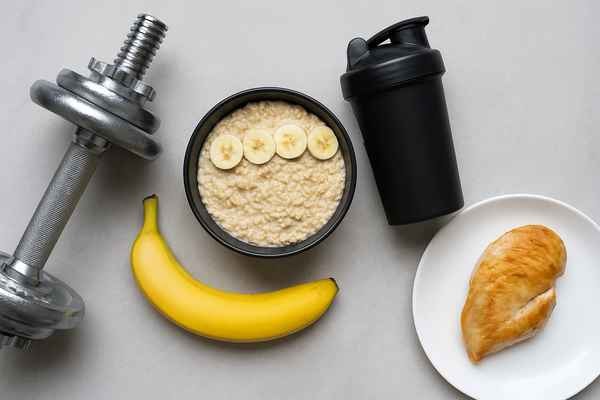
Most people talk about losing weight. But gaining weight—especially 10 kg—needs a smart plan too. It’s not just about eating more. It's about eating right and doing it safely.
If you’re underweight, your body may lack muscle mass, healthy fats, and key nutrients. That can cause low energy, weak bones, and even a weaker immune system. According to the CDC, being underweight can be just as harmful as being overweight.
That’s why a 10 kg weight gain diet chart isn’t just a meal plan. It’s a tool to help you gain weight healthily, avoid junk food, and reach your weight gain goals with confidence.
“Book a Free Consultation with a Clinical Nutritionist”
—Balance Bite offers one‑on‑one nutritionist consultations with expert guidance.
Setting Smart Weight Gain Goals (Like 10 kg in 60 Days)
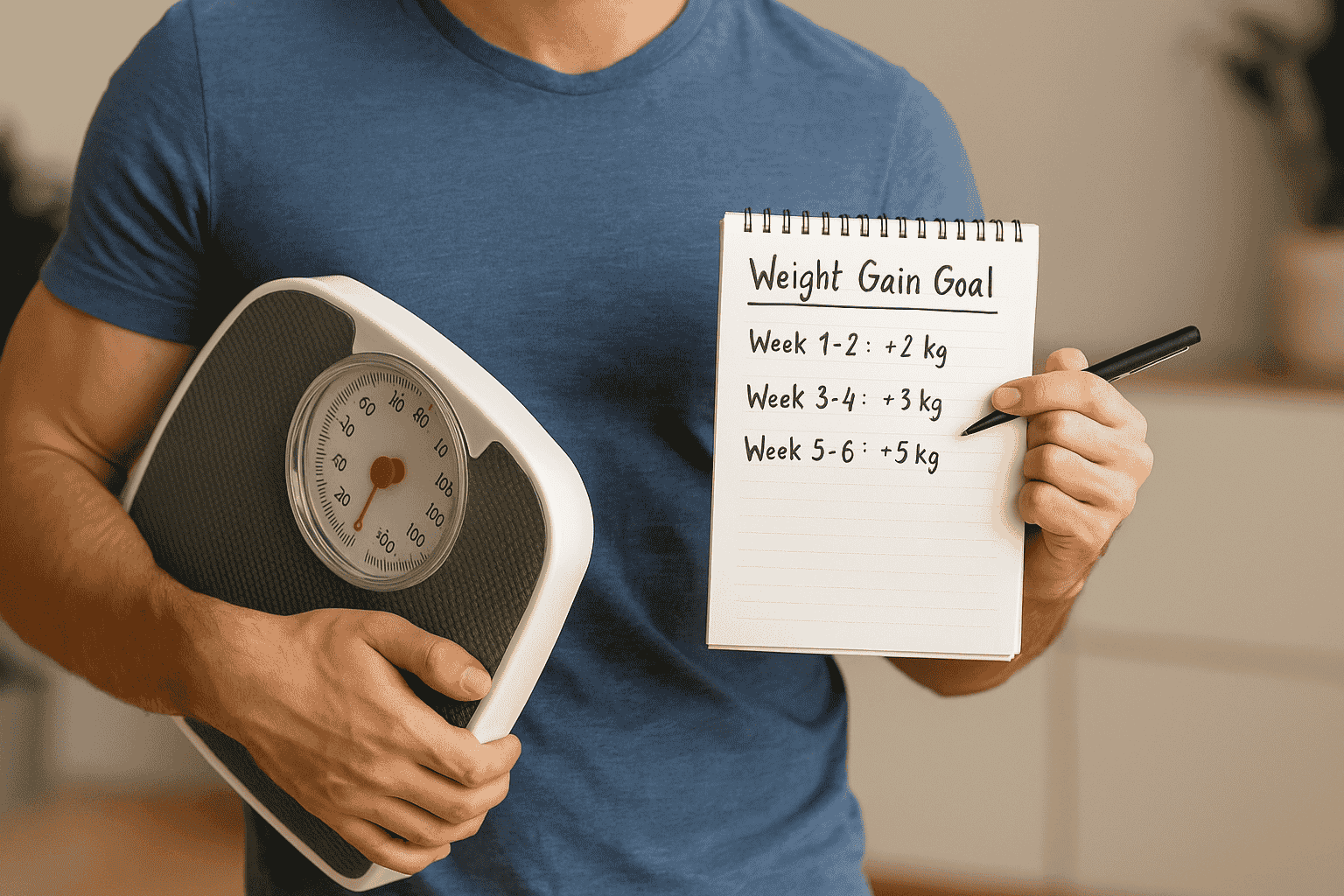
Want to Gain Weight Fast? Here’s What to Focus On
-
Know What "10 kg in 60 Days" Really Means: Gaining 10 kg in 60 days means you need to gain about 1.2 to 1.5 kg per week. That’s not just fat—it should be a mix of lean muscle mass and healthy weight.
You’ll need to eat at least 500 to 800 extra calories daily. That’s like adding a bowl of brown rice, trail mix, and a banana smoothie every day.
-
Calculate Your Daily Calorie Intake: Use a calorie calculator to find out how much energy your body burns. Then, add more calories to create a calorie surplus. Don't guess. Know your daily calorie intake to avoid fat gain and aim for muscle growth.
Include calorie dense foods like natural peanut butter, cottage cheese, and whole milk. Eating fewer calories than your body burns can stop you from gaining weight.
-
Break the Goal into Weekly Micro-Targets: Trying to gain 10 kg all at once can be stressful. Instead, set weekly goals like:
-
Week 1–2: +2 kg
-
Week 3–4: +3 kg
-
Week 5–6: +5 kg
This makes the journey easier and helps track effective weight gain.
-
-
Pair Calorie Goals with Muscle Goals: Eating more is good, but don’t forget to build muscle. Add strength training 3–4 times a week. This turns extra calories into lean muscle, not just body weight. Try push-ups, squats, or light dumbbells. Even 30 minutes daily helps.
-
Track More Than Just the Scale: The weighing scale is just one tool. Also track:
-
Energy levels
-
Muscle mass
-
Body measurements
-
Protein intake
This shows if your weight gain diet is working or if changes are needed.
-
-
Avoid the Dirty Bulk Trap: Gaining weight doesn’t mean eating junk foods, refined carbs, or sugary snacks all day. They might help you gain fast but lead to unhealthy fats and poor overall health. Instead, choose nutrient dense foods like sweet potatoes, lean meats, and whole grain bread.
-
Fuel With Intent, Not Just Volume: Don’t just eat more—eat smarter. Plan every meal with a mix of:
-
Complex carbohydrates (like whole grains)
-
Lean proteins
-
Healthy fats (like olive oil, nut butters, or coconut oil)
This fuels your workouts, supports muscle growth, and ensures sustainable weight gain.
-
What Makes a Good Weight Gain Diet Plan Work?
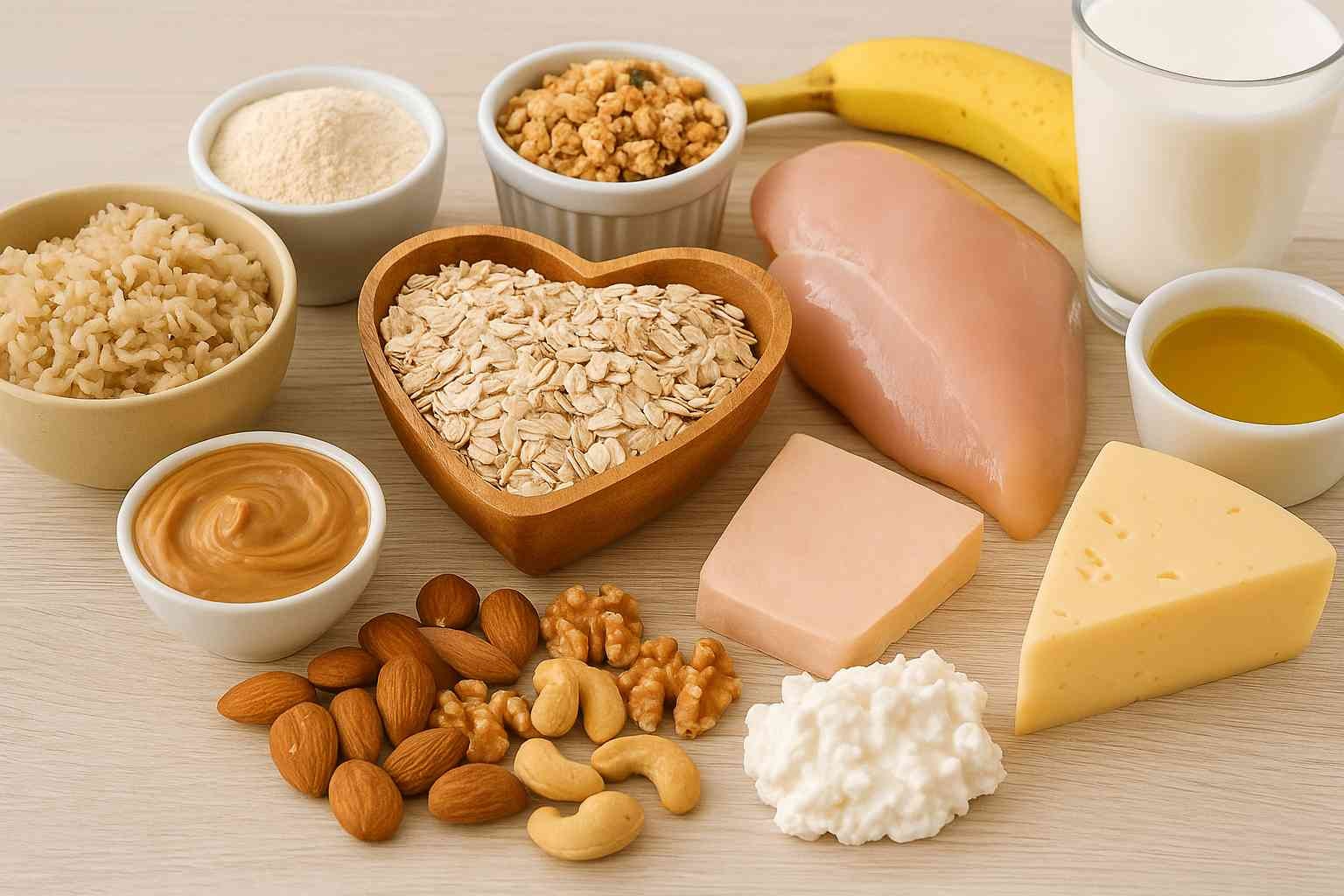
Not all diet plans are created equal—especially when it comes to gaining weight the healthy way. A good 10 kg weight gain diet chart is more than just eating more food. It’s about eating the right food in the right way, every single day.
Here’s what a good weight gain diet plan should include:
-
Complex carbohydrates to keep your energy levels high
-
Calorie dense and nutrient dense meals that help you build muscle mass, not just fat
-
Enough protein intake and healthy fats like olive oil, nut butters, and coconut oil
-
Smart tracking of daily calorie intake and protein powder usage when needed
-
Planning meals around real-life goals like building muscle, not just increasing body weight
Why Complex Carbohydrates Are Key for Effective Weight Gain
If you want effective weight gain, you need complex carbohydrates in every meal. These carbs break down slowly and give your body lasting energy. That means you can eat more without feeling full too fast.
Here’s why they matter:
-
Help you gain weight healthily by keeping blood sugar stable
-
Found in whole grains, brown rice, sweet potatoes, and whole grain breads
-
Better than refined carbs which cause fat gain and crash energy
-
Support muscle growth when paired with lean proteins like cottage cheese or lean meats
Quick Tip: Start your day with oats or whole grain toast. Add natural peanut butter or sliced fruit to boost calories without adding junk food.
Your 10 kg Weight Gain Diet Chart: Sample Weekly Plan
Breakfast to Dinner: What a Full Day of 5 Weeks of Eating Looks Like
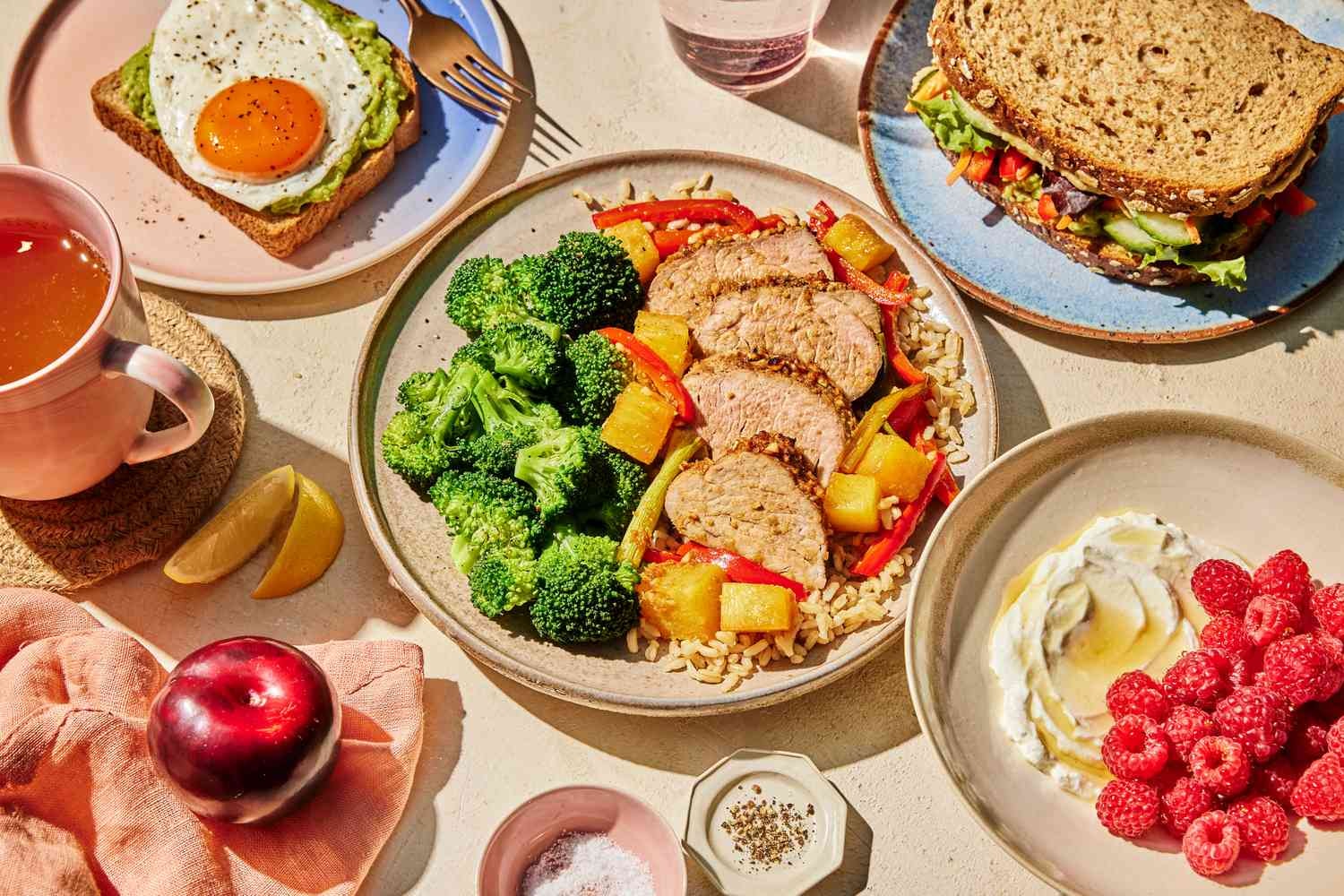
Week 1: Build the Habit (Target: +2 kg)
Breakfast Options
-
Veggie omelette + toast with ghee
-
Upma with peanuts + banana shake
-
Paneer-stuffed paratha + curd
Mid-Morning Snack Options
-
Roasted chana + dates
-
Boiled egg + walnuts
-
Fruit salad with trail mix
Lunch Options
-
Dal khichdi + ghee + beetroot salad
-
Vegetable biryani + raita
-
Rice + soya curry + cucumber salad
Evening Snack Options
-
Whole milk smoothie with oats and banana
-
Cheese toast + mixed nuts
-
Coconut water + peanut chikki
Dinner Options
-
Palak paneer + roti + salad
-
Masoor dal + jeera rice + curd
-
Sambar + dosa + coconut chutney
Week 2: Add More Calories (Target: +2.2 kg)
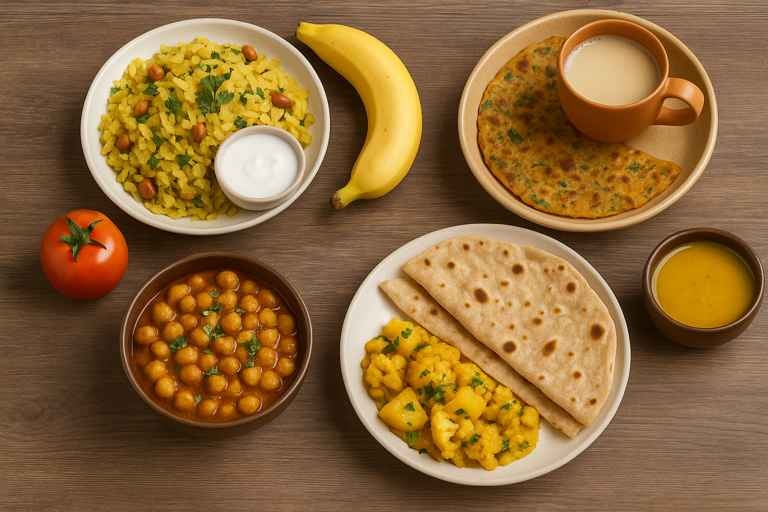
Breakfast Options
-
Poha with peanuts + banana + curd
-
Bread toast + peanut butter + boiled egg
-
Vegetable paratha + buttermilk
Mid-Morning Snack Options
-
Mixed nuts + jaggery
-
Sweet potato chaat
-
Almond milk + banana
Lunch Options
-
Rice + chole + salad
-
Chapati + aloo gobi + dal
-
Mixed veg pulao + curd
Evening Snack Options
-
Besan chilla + mint chutney
-
Fruit smoothie with seeds
-
Paneer tikka sticks
Dinner Options
-
Chicken curry + millet roti + salad
-
Rajma chawal + curd
-
Vegetable soup + bread + ghee rice
Week 3: Focus on Muscle Mass (Target: +2 kg)
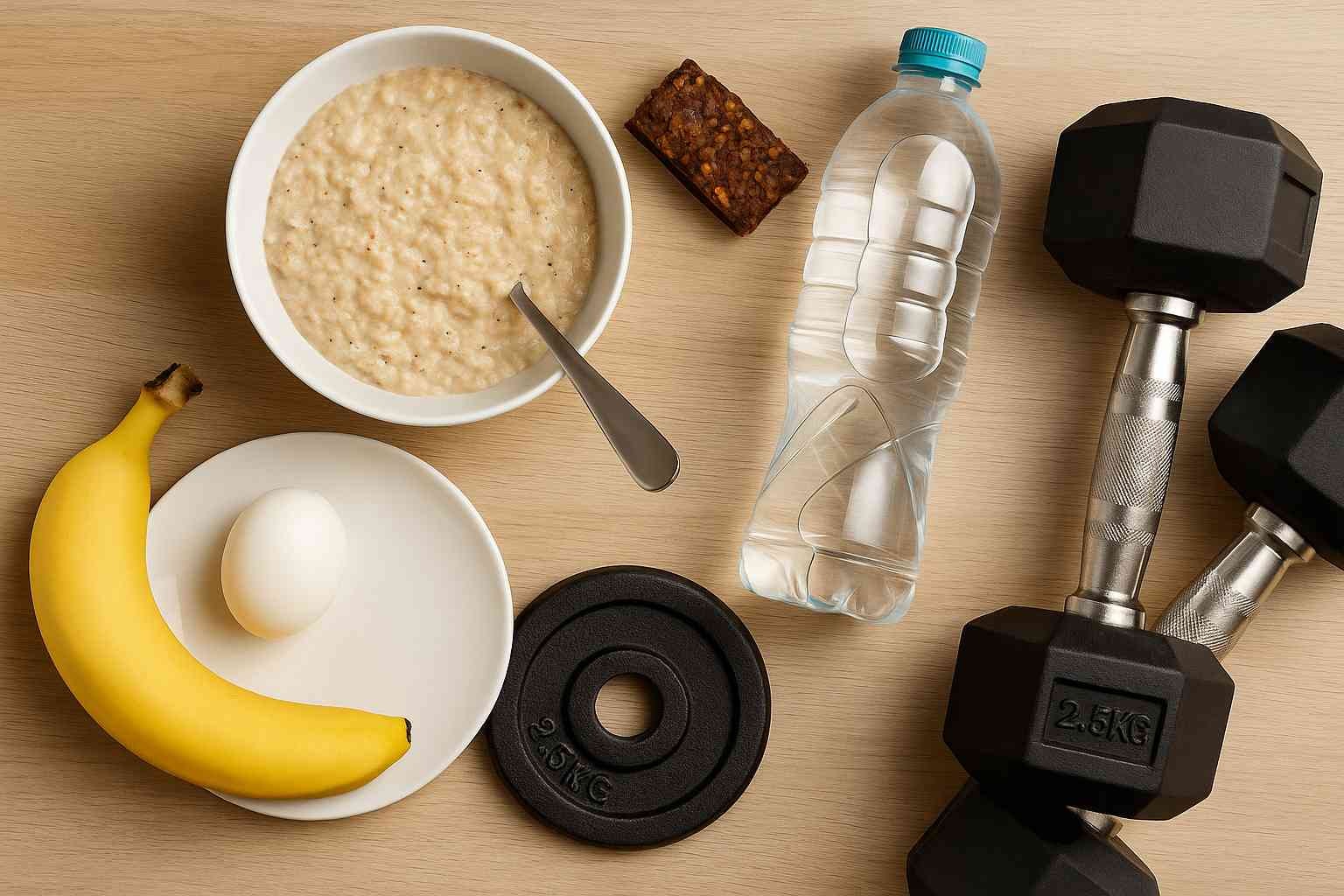
Breakfast Options
-
Ragi porridge + boiled egg
-
Oats idli + peanut chutney
-
Multigrain toast + banana + almond butter
Mid-Morning Snack Options
-
Coconut water + dry fruits
-
Sprouts chaat
-
Milkshake + energy bar
Lunch Options
-
Grilled fish + brown rice + stir-fried vegetables
-
Paneer bhurji + roti + salad
-
Moong dal + rice + ghee
Evening Snack Options
-
Protein bar + fruit
-
Buttermilk + roasted makhana
-
Greek yoghurt + honey + nuts
Dinner Options
-
Tofu curry + rice + sautéed veggies
-
Dal palak + chapati + curd
-
Vegetable stew + appam
Week 4: Increase Protein Intake (Target: +2.3 kg)
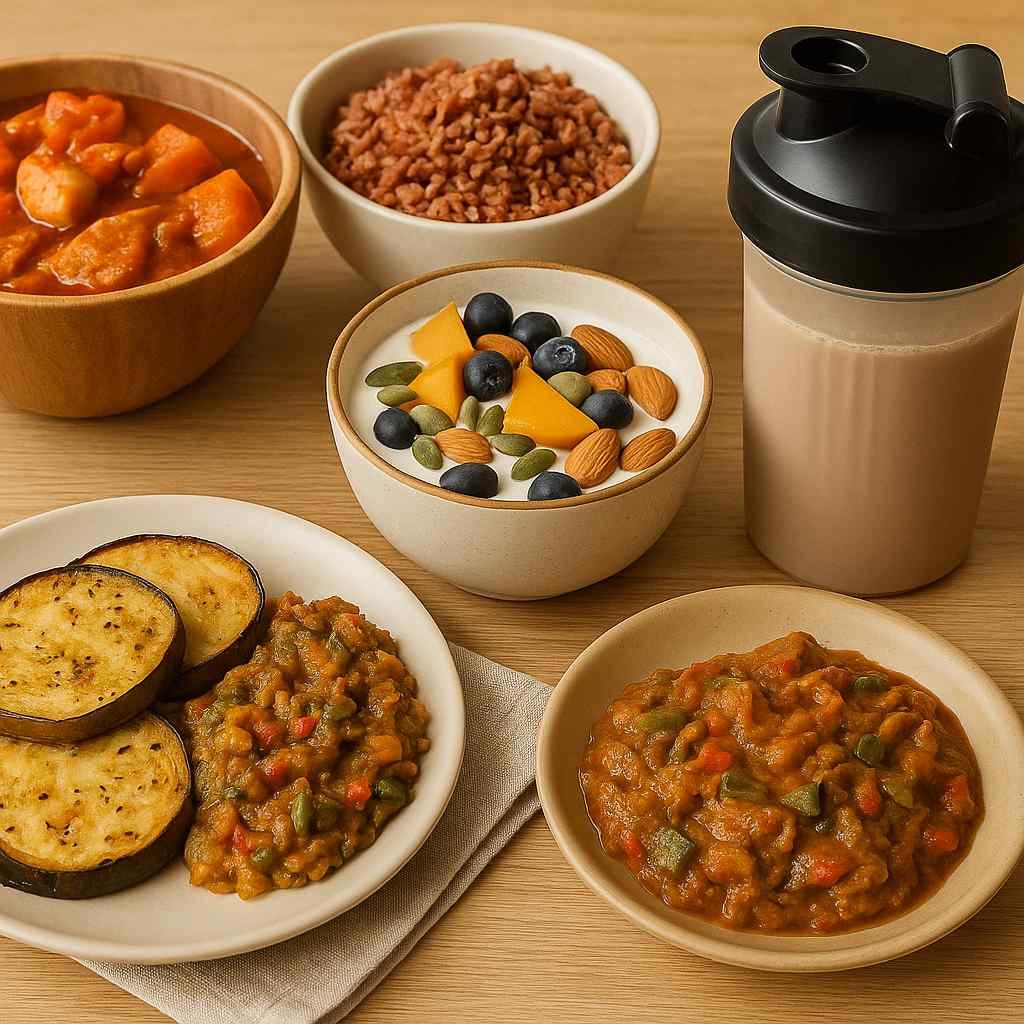
Breakfast Options
-
Moong dal cheela + chutney
-
French toast + boiled egg
-
Rice flakes with milk + fruits
Mid-Morning Snack Options
-
Trail mix + coconut slices
-
Mango smoothie + protein powder
-
Handful of dates + almond milk
Lunch Options
-
Chicken stew + red rice + sautéed greens
-
Baingan bharta + roti + cucumber raita
-
Chana masala + paratha
Evening Snack Options
-
Yoghurt bowl with fruits + seeds
-
Milk + protein cookies
-
Veg sandwich + lemon water
Dinner Options
-
Vegetable pasta + cheese + garlic toast
-
Soya curry + jeera rice + salad
-
Chicken biryani + raita
Week 5: Sustain the Gains (Target: +1.8 kg)
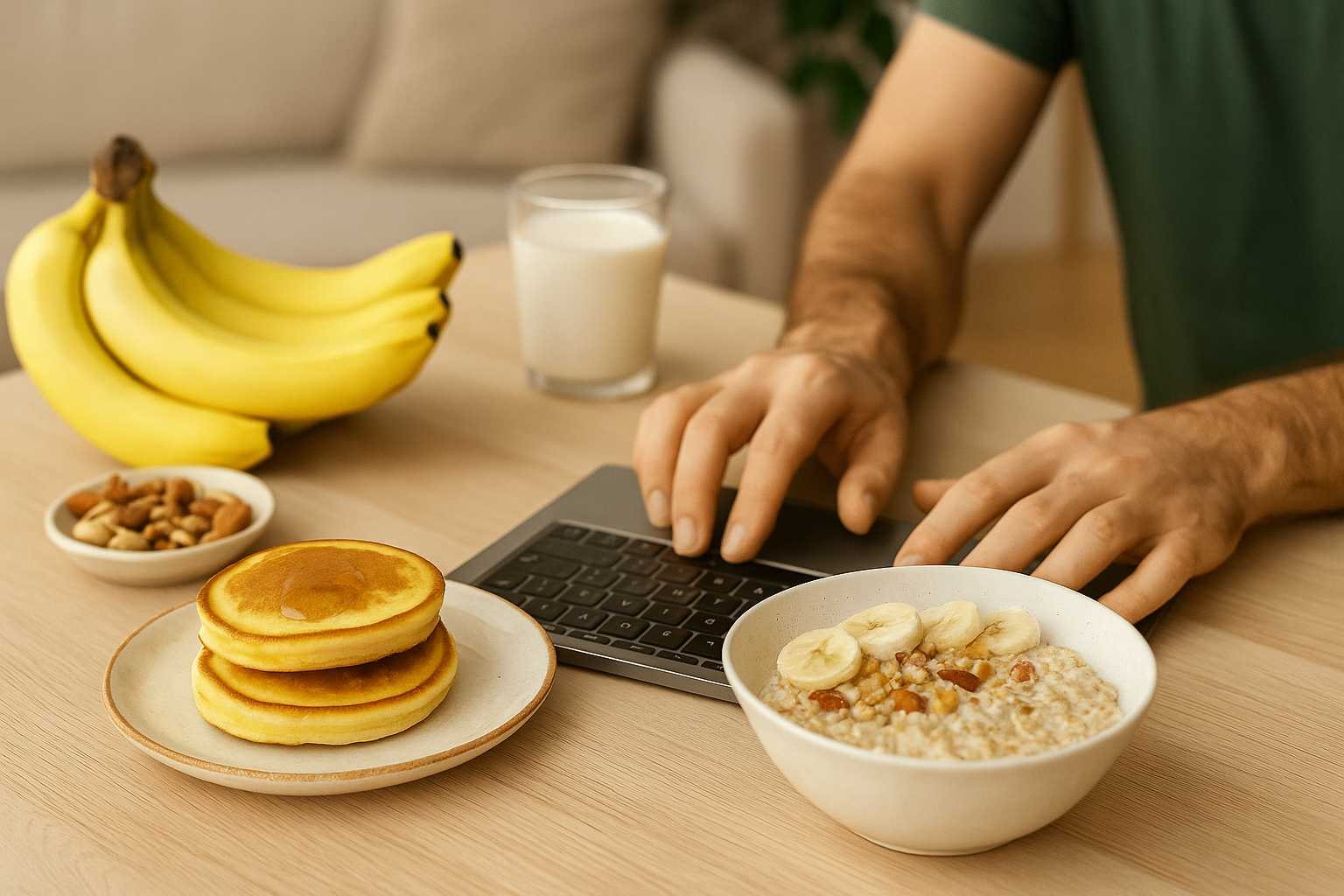
Breakfast Options
-
Banana pancake + honey + milk
-
Oats and fruit bowl + nuts
-
Cheese paratha + lassi
Mid-Morning Snack Options
-
Peanut chikki + banana
-
Fruit salad with chia seeds
-
Boiled sweet corn + lime
Lunch Options
-
Kofta curry + rice + mixed veg salad
-
Kichdi + papad + salad
-
Fish curry + chapati
Evening Snack Options
-
Masala peanuts + fruit juice
-
Smoothie bowl with granola
-
Protein shake + trail mix
Dinner Options
-
Grilled tofu + brown rice + dal soup
-
Vegetable korma + poori
-
Chicken curry + egg rice
“Get Your Personalized Nutrition Plan + Groceries Delivered”
— Balance Bite promise a custom diet and grocery plan curated for your goals.
Best Foods to Include in Your Weight Gain Diet Plan
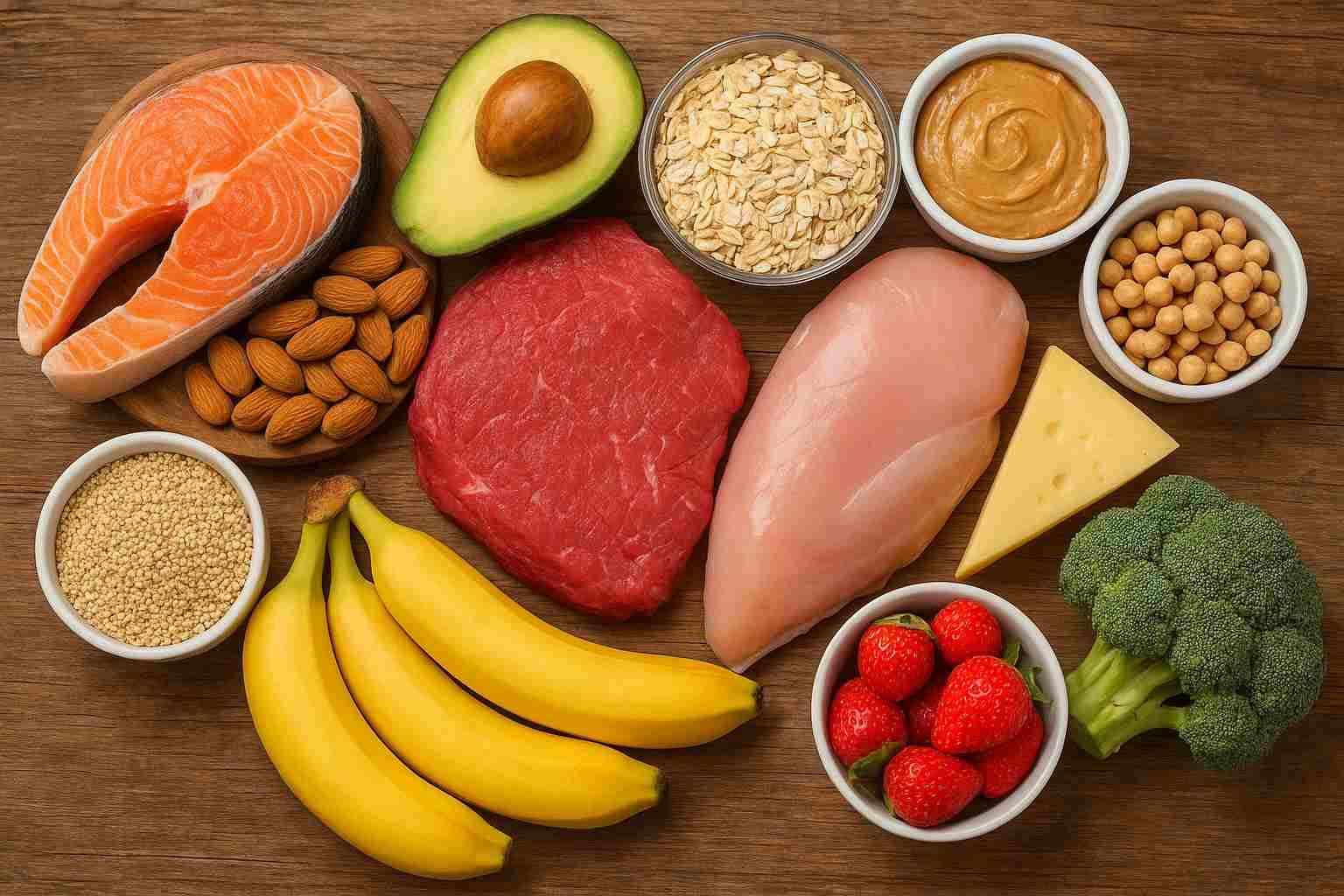
1. Nut Butters & Mixed Nuts
Nut butters like natural peanut butter and almond butter, and mixed nuts like cashews, walnuts, and pistachios are rich in healthy fats and extra calories.
How They Help:
-
High in calorie dense foods—great for small meals with big energy
-
Support muscle mass and body weight gain
-
Contain nutrient dense elements like magnesium and protein
How to Add Them to Your Diet Plan:
-
Add natural peanut butter to whole grain bread toast
-
Snack on a trail mix of almonds, raisins, and walnuts between meals
-
Blend a spoonful of nut butter into your protein shake for more calories
2. Whole Milk & Full-Fat Dairy
Whole milk, cottage cheese, Greek yoghurt, and cheese are loaded with healthy fats, high quality protein, and natural sugars like lactose.
How They Help:
-
Help build lean muscle mass
-
Boost daily calorie intake quickly
-
Improve protein intake without feeling too full
How to Add Them to Your Diet Chart:
-
Drink 1–2 glasses of whole milk daily
-
Eat Greek yoghurt with sliced fruit as a snack
-
Add cheese slices to sandwiches made with whole grain breads
3. Brown Rice & Whole Grains or Whole Grain Bread
These are complex carbohydrates—they digest slowly and keep energy steady. That helps you eat more throughout the day.
How They Help:
-
Prevent blood sugar spikes
-
Build muscle mass with consistent fuel
-
Support effective weight gain and keep you full longer
How to Add Them to Your Plan for Weight Gain:
-
Pair brown rice with lean proteins like chicken or cottage cheese
-
Eat whole grain bread with olive oil or egg
-
Try whole grain crackers with nut butters for snacks
4. Sweet Potatoes & Starchy Vegetables
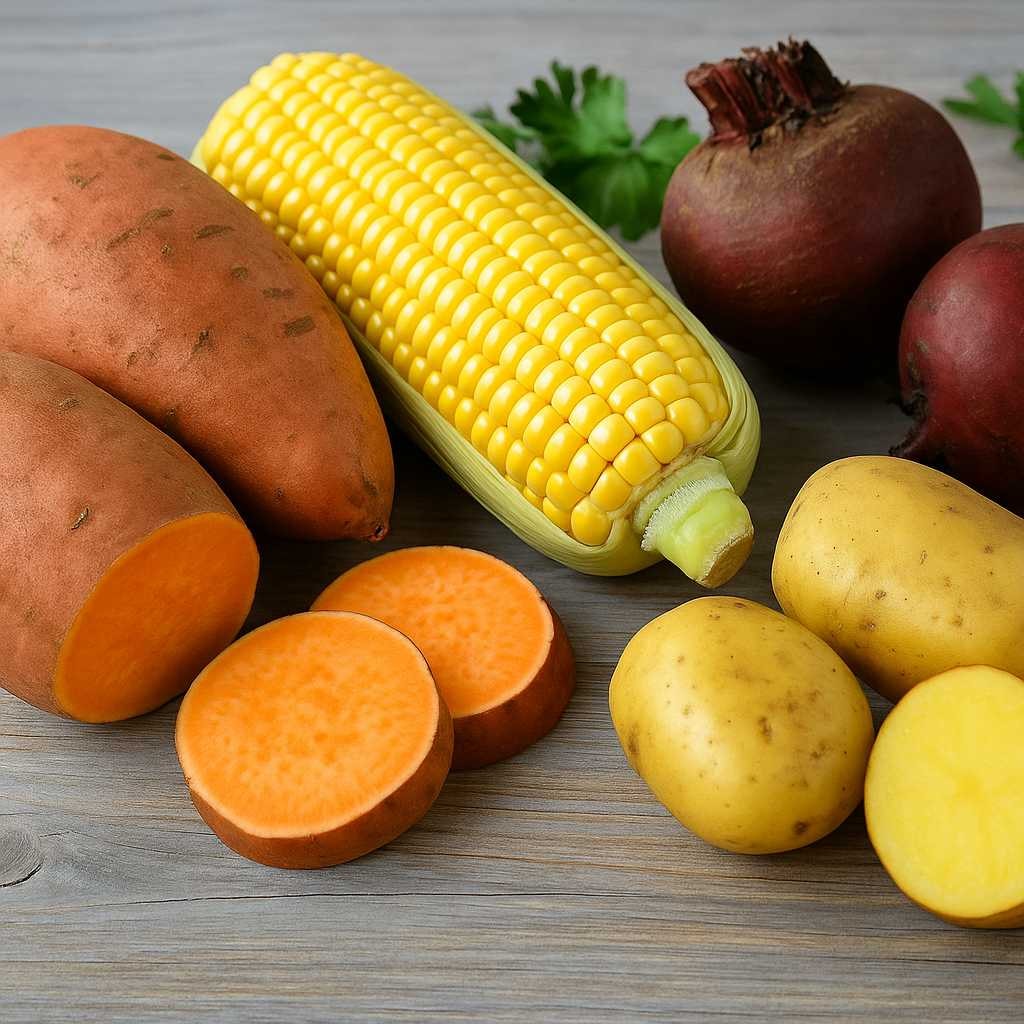
These are root vegetables like sweet potatoes, yams, beets, and corn. They are full of good carbs and calories.
How They Help:
-
They give your body slow energy
-
Help build muscle mass
-
Support steady weight gain over time
Easy Ways to Eat Them:
-
Boil or roast sweet potatoes and top with butter or ghee
-
Mix corn into rice, salads, or soups
-
Add boiled beets to sandwiches or wraps
5. Eggs, Lean Meats & Fatty Fish
These are your best sources of protein, which your body needs to build muscle, not just fat.
How They Help:
-
High in protein and healthy fats
-
Help recover after workouts
-
Add lean muscle weight when eaten with carbs
Easy Recipe Ideas:
-
Boiled eggs as snacks or added to toast
-
Grilled chicken with rice or roti
-
Salmon or mackerel cooked in olive oil for dinner
6. Olive Oil, Coconut Oil & Ghee
These are healthy fats that you can easily add to meals. Just a spoonful gives you extra calories.
How They Help:
-
Add calories without bulk, great if you feel full fast
-
Help absorb vitamins like A, D, E, and K
-
Improve skin, energy, and digestion while gaining weight
How to Add Them to Your Diet:
-
Use olive oil to sauté vegetables or mix into pasta
-
Cook your meals in coconut oil or add it to smoothies
-
Add a spoon of ghee to rice, dal, or rotis
7. Trail Mix & Dark Chocolate
Trail mix is a mix of nuts, seeds, dried fruits, and sometimes a bit of dark chocolate.
How It Helps:
-
It's energy-dense. Just a handful gives 300–400 calories.
-
Full of healthy fats, fiber, and iron.
-
Easy to snack on anytime, especially between meals.
Simple Ways to Eat It:
-
Keep a jar at your desk or backpack.
-
Add trail mix to your morning oats or curd.
-
Choose dark chocolate that's 70% or more for better antioxidants.
8. Smoothies with Protein Powder or Nut Butters
These are thick drinks made with milk, fruits, and add-ons like protein powder or peanut butter.
How It Helps:
-
A single smoothie can give 400–600 calories.
-
Adds both protein and healthy fats.
-
Easy to digest and drink, even if you don’t feel hungry.
Quick Smoothie Recipe for Weight Gain:
-
1 banana
-
1 cup whole milk
-
1 tablespoon peanut butter
-
1 scoop protein powder (optional)
-
Blend and drink cold!
What to Avoid: Foods That Slow Down Healthy Weight Gain
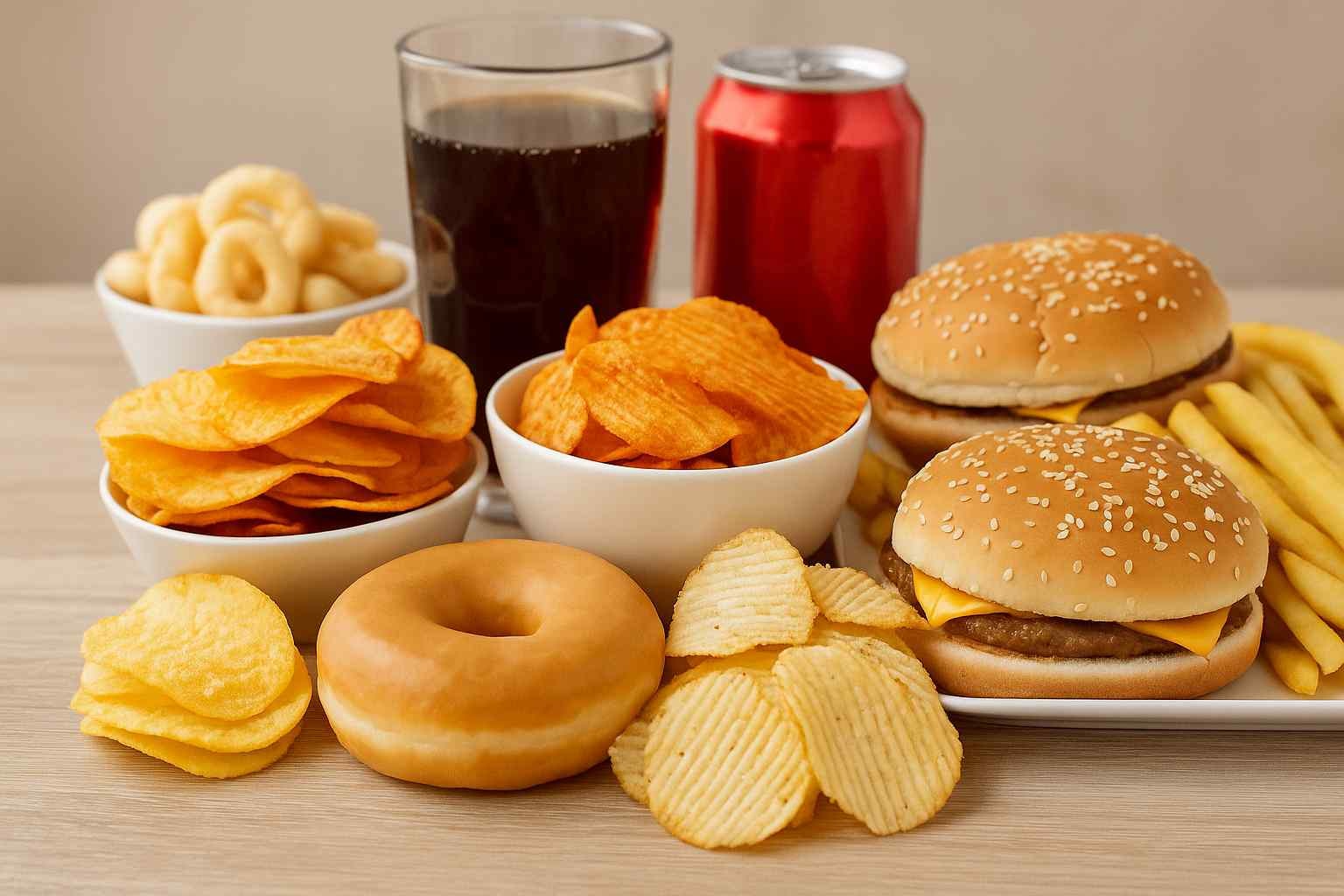
-
Junk Foods & Empty Calories: Chips, soda, fries, and fast food might look tempting, but they lack nutrition. They add bad fat, not muscle. You may gain belly fat, not healthy weight.
-
Sugary Snacks & Refined Carbs: White bread, pastries, and cookies are high in sugar and low in fiber. They spike your blood sugar fast. Then drop your energy just as fast. Instead, go for whole grains and natural sugars like fruit.
-
Unhealthy Fats in Processed Foods: Processed foods use trans fats and low-quality oils. These can increase cholesterol. They also make you feel bloated. Use ghee or olive oil instead—they're healthier and also on your 10 kg weight gain diet chart.
-
Artificially Sweetened or Low-Calorie Diet Foods: These are not for weight gain. They're made to cut calories, not increase them. Diet sodas may even reduce appetite, which slows progress. Skip them if your goal is healthy weight gain.
-
Too Much Alcohol: A beer belly isn’t real weight gain. Alcohol slows digestion and weakens muscle recovery. Also, it messes with your sleep and hormone balance. Avoid or limit it as much as possible.
Some foods are designed to help you lose weight, not gain it. So, keep a tab on them.
Why Building Muscle Matters: Combine Diet with Strength Training
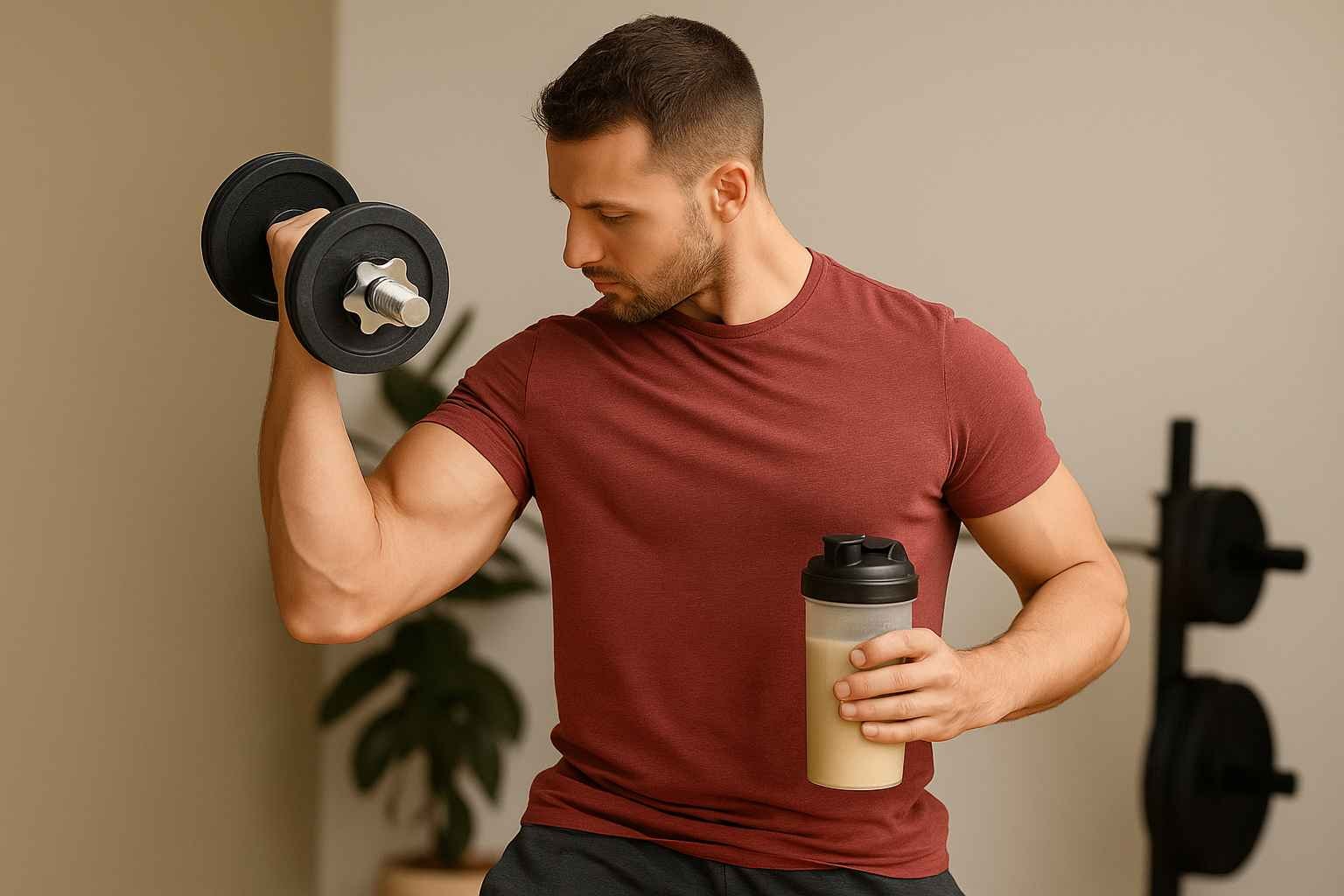
Following a 10 kg weight gain diet chart will help you eat more calories, but diet alone isn’t enough. To gain healthy weight and avoid unwanted fat gain, you must combine food with strength training.
When you lift weights or do body exercises, the extra calories from your diet go to build muscle mass, not just body fat. This gives you more strength, energy, and a better shape.
“Adults who combine high-protein diets with resistance training gain 1.3–1.5 kg of lean muscle in just 8 weeks” — National Institutes of Health (NIH).
Here’s how to do it right:
-
Eat first, train next. Have a meal rich in complex carbohydrates and lean proteins before workouts.
-
Focus on compound moves. Squats, push-ups, and dumbbell lifts work multiple muscles.
-
Track progress. Measure muscle mass, protein intake, and calorie intake, not just your weight.
-
Recover well. Add cottage cheese, whole milk, or protein powder post-workout to speed recovery.
Combining a 10 kg weight gain diet chart with even 30 minutes of strength training 3–4 days a week ensures effective weight gain and sustainable results.
Special Focus: How Female Gain Weight Plans Differ from Men
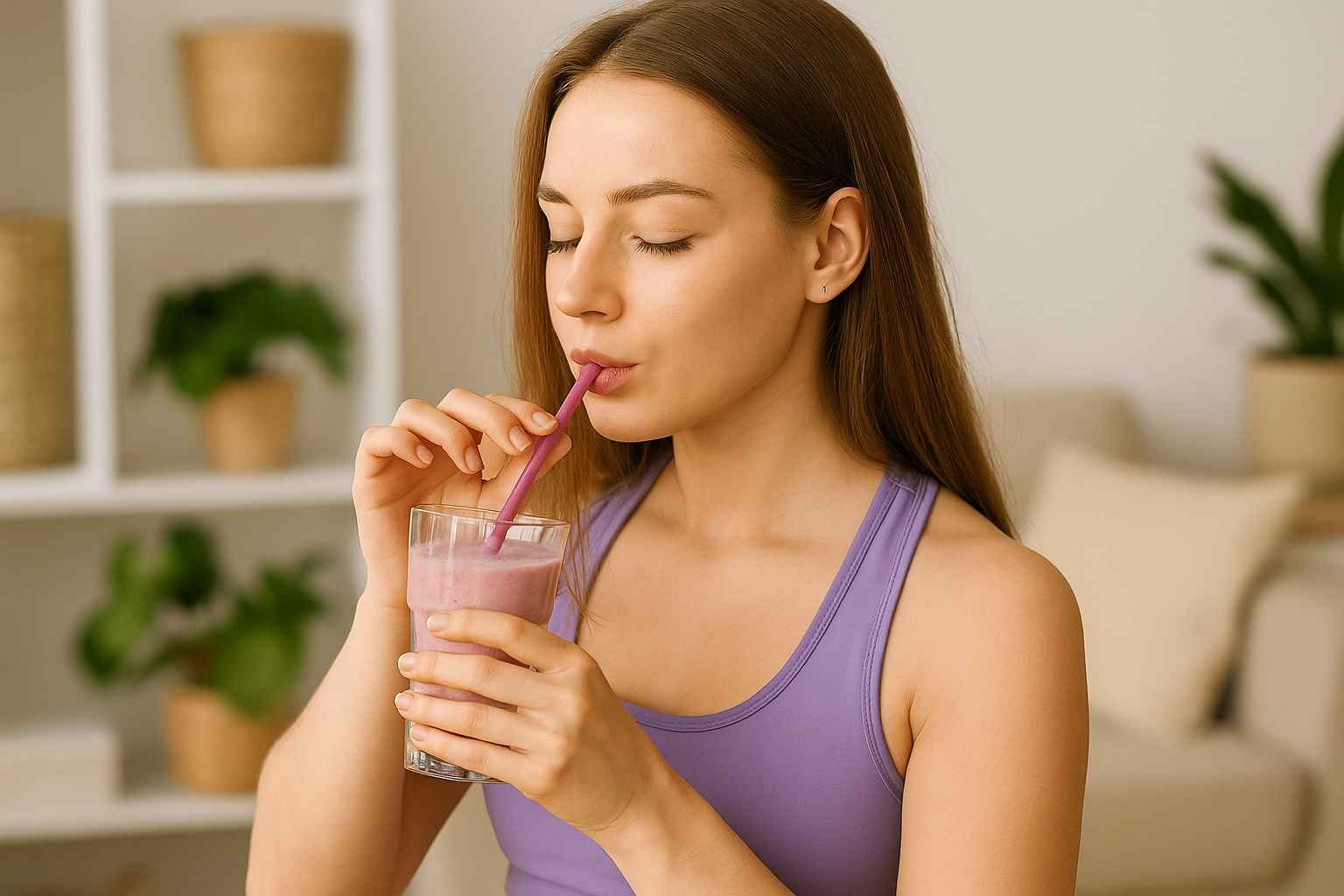
Gaining weight as a woman isn’t always as straightforward as it is for men. Hormones, appetite, and metabolism can make it harder for female gain weight goals to show results. The good news? With the right plan, women can add healthy mass and strength without compromising overall health.
Why Women Struggle to Gain Weight
-
Faster metabolism and smaller appetites can limit calorie intake.
-
Hormonal fluctuations can affect hunger and nutrient absorption.
-
Fear of “looking bulky” often leads to skipping protein or healthy fats.
Tips to Support Healthy Female Gain Weight Goals
-
Eat calorie-dense snacks between meals: dates with peanut butter, banana milkshakes, or trail mix with dark chocolate.
-
Choose full-fat dairy like whole milk, Greek yoghurt, or paneer instead of skimmed versions.
-
Add healthy fats (ghee, coconut oil, olive oil) to rice, rotis, and vegetables for extra calories.
-
Include strength training to ensure weight gain is lean muscle, not fat.
-
Track progress beyond the scale—energy, strength, and overall wellbeing matter too.
Pro Tip: Women don’t need “special” diets to gain weight—just tailored calorie targets, consistent meals, and resistance training to turn extra food into lean muscle mass.
Common Questions About Gaining Weight the Healthy Way
1. Can you gain muscle and body weight at the same time?
-
Yes, you can! If you follow a smart 10 kg weight gain diet chart and pair it with strength training, your body can build muscle and gain weight together.
-
The key is to eat more calories than you burn and include enough protein daily. When your body has extra energy and nutrients, it uses them to repair and grow muscles after workouts.
2. What if you’re still not gaining weight after eating more calories?
-
Sometimes your body burns more than you think—especially if you move a lot or have a fast metabolism. If you’re eating more but still not gaining, increase your meals slightly. Add healthy calorie boosters like peanut butter, banana shakes, nuts, or ghee.
-
Also, track your weight weekly. If it’s not improving, tweak your plan. Don’t worry, even a small change can make a big difference.
3. How does protein powder fit into a sustainable weight gain diet?
-
Protein powder is helpful, but it’s not magic. It works best when used with real meals in your 10 kg weight gain diet chart. Use it as a post-workout shake or when you can’t cook.
-
Go for clean options like whey protein or plant-based blends with no added sugar. Just one scoop can give you 20–25g of easy-to-digest protein—great for building lean muscle.
Final Note
If you’re serious about putting on weight, the 10 kg weight gain diet chart can help you do it in a healthy way. But remember—this isn’t about eating just anything. Avoid junk food. Instead, choose nutrient rich foods and nutritious whole foods like whole grains, lean meats, and healthy fats.
Ask yourself, how many calories are you eating each day? If your daily calorie intake is still too low, you won’t gain. Use a proper diet plan to track progress. If needed, add protein bars and calorie-dense snacks.
For a healthy diet, your goal shouldn’t be only weight. Focus on supporting healthy weight gain and building strength too. Real results come from a smart, consistent plan for weight gain.
“Weight gain done right is slow, structured, and sustainable,” says dietitian Priya Malhotra.
Take action. Use the chart, eat smart, and stay consistent.
“Explore Balanced Bite’s Programs (Weight Gain, Family Nutrition & More)”
— They have programs beyond weight loss—like executive health, family nutrition, etc.




















Leave a comment
Translation missing: en.blogs.comments.discription